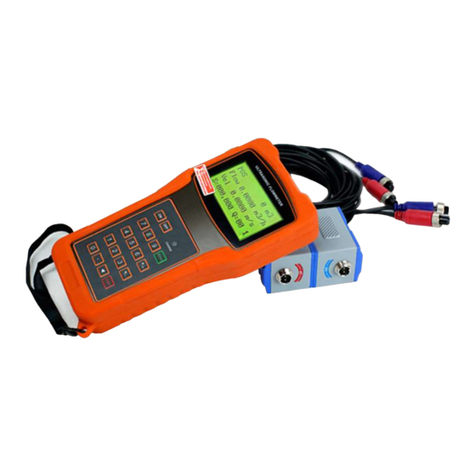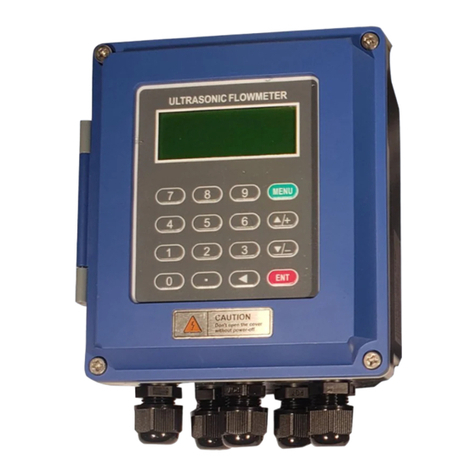
-5-
To switch on the meter, please turn the knob switch to any
of the function positions.
When the power is turned on, the meter starts an internal
self-diagnosis with a full screen display before corresponding
operations can be conducted.
To ensure correct live operation of the meter, the meter
must be powered off for 5 seconds before restarting it.
Automatic Power Off
The factory setting of the meter: If the user does not
perform any operation on the meter within 15 minutes, it will
automatically turn off the power.
Once the meter automatically powers off, to restart it,
please turn the knob switch to OFF position and then turn it on.
Users can set on their own whether to use the automatic
power off function (Refer to Chapter IV "Setting Function").
Note: The meter will still consume about 1 mA current after
it automatically turns off power, so it is recommended to turn the
knob switch to the OFF position when not using it.
Turn on Back Light
Press the button to turn on the back light, and press the
button again to turn it off.
Automatic Back Light off
The factory setting of the meter: If the user does not turn off
the meter's back light within 30 seconds, the meter will
automatically turn off the back light.
Users can set on their own whether to use the automatic
back light off function (Refer to Chapter IV "Setting Function").
Turn on Flash Light
Press the button continuously for more than 2 seconds
to turn on the flash light, and press the button continuously
for more than 2 seconds again to turn it off.
Automatic Flash Light off
The factory setting of the meter: If the user does not turn off
the meter's back light within 30 seconds, the meter will
automatically turn off the flash light.
Users can set on their own whether to use the automatic
flash light off function (Refer to Chapter IV "Setting Function").
Knob Switch
Turn the knob switch to any function position to switch on






























